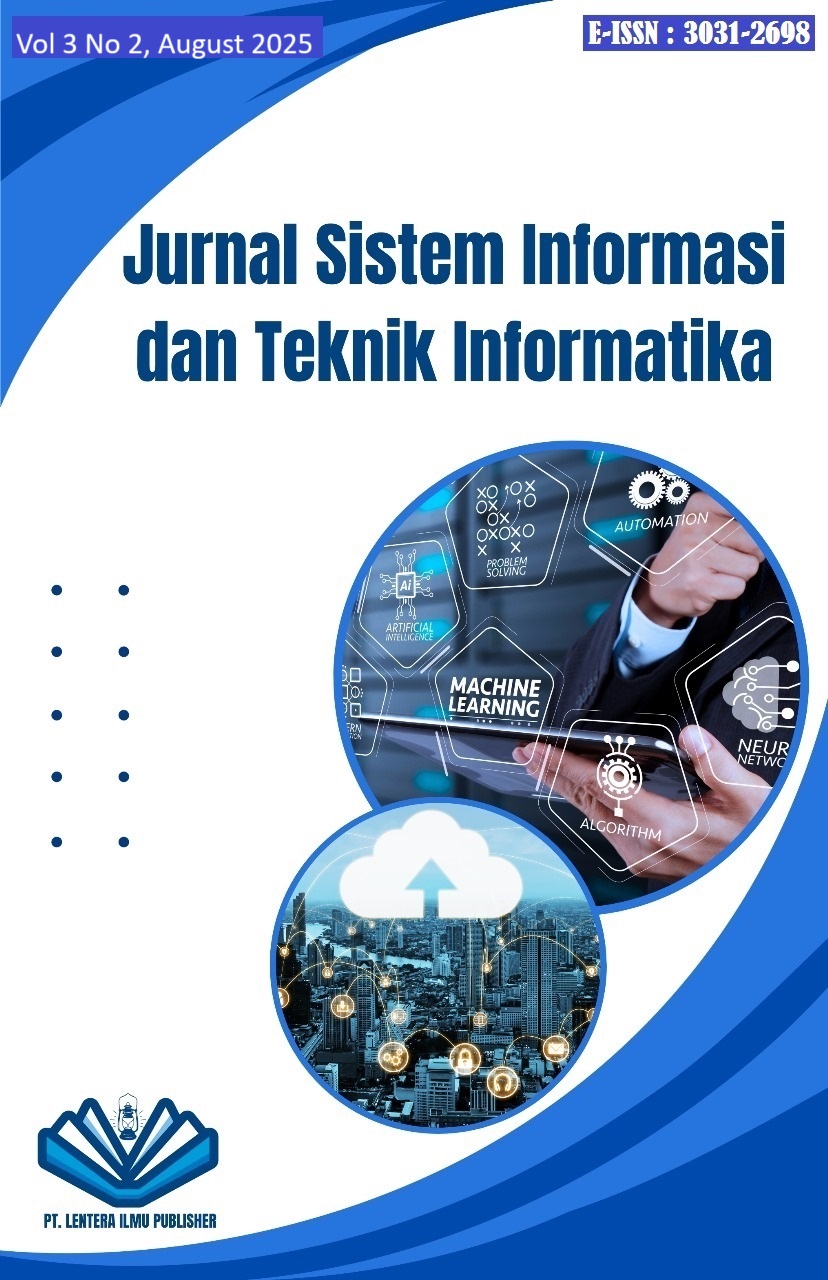Integrated Information System for Livestock Health Data Management
DOI:
https://doi.org/10.70356/jafotik.v3i2.77Keywords:
Livestock Health, Information System, Data ManagementAbstract
The growing demand for efficient livestock management highlights the importance of reliable health data systems that support decision-making and disease prevention. However, many existing approaches still rely on fragmented and manual processes, leading to inaccuracies, delays, and limited collaboration among stakeholders such as farmers, veterinarians, and government officers. This study proposes an Integrated Information System for Livestock Health Data Management designed to centralize health records, streamline data entry, and enhance reporting accuracy. The system employs structured data modeling through class diagrams, flowcharts, and interface designs to capture farmer reports, veterinary diagnoses, and administrative validations in a coordinated workflow. By integrating these processes, the solution ensures seamless data flow, reduces redundancy, and fosters collaboration across roles. The results demonstrate improved data consistency, faster response times, and stronger support for monitoring livestock health. This approach provides a practical and replicable framework to modernize livestock health management systems.
Downloads
References
G. Papadopoulos et al., “Economic and environmental benefits of digital agricultural technological solutions in livestock farming: A review,” Smart Agric. Technol., vol. 10, no. January, p. 100783, 2025, doi: https://doi.org/10.1016/j.atech.2025.100783.
H. Görge, I. Dittrich, N. Kemper, and J. Krieter, “Solutions and prospects for digital documentation of treatment data on-farm,” Smart Agric. Technol., vol. 5, no. August, 2023, doi: https://doi.org/10.1016/j.atech.2023.100299.
A. Shahbaz, W. Zhang, and M. Smith, “A novel system for automated continuous on-farm assessment of digital dermatitis using artificial intelligence,” Smart Agric. Technol., vol. 12, no. July, p. 101178, 2025, doi: https://doi.org/10.1016/j.atech.2025.101178.
M. A. Al-ghouti, M. Khan, M. S. Nasser, K. Al Saad, and O. O. N. E. Heng, “Jo ur na l P re of,” J. Clean. Prod., p. 125039, 2020, doi: https://doi.org/10.1016/j.csag.2025.100069.
T. Ohashi, M. Saijo, K. Suzuki, and S. Arafuka, “From conservatism to innovation: The sequential and iterative process of smart livestock technology adoption in Japanese small-farm systems,” Technol. Forecast. Soc. Change, vol. 208, no. June, p. 123692, 2024, doi: https://doi.org/10.1016/j.techfore.2024.123692.
K. D. Prasetya, Suharjito, and D. Pratama, “Effectiveness Analysis of Distributed Scrum Model Compared to Waterfall approach in Third-Party Application Development,” Procedia Comput. Sci., vol. 179, no. 2019, pp. 103–111, 2021, doi: https://doi.org/10.1016/j.procs.2020.12.014.
T. Thesing, C. Feldmann, and M. Burchardt, “Agile versus Waterfall Project Management: Decision model for selecting the appropriate approach to a project,” Procedia Comput. Sci., vol. 181, pp. 746–756, 2021, doi: https://doi.org/10.1016/j.procs.2021.01.227.
A. A. S. Gunawan, B. Clemons, I. F. Halim, K. Anderson, and M. P. Adianti, “Development of e-butler: Introduction of robot system in hospitality with mobile application,” Procedia Comput. Sci., vol. 216, no. 2019, pp. 67–76, 2022, doi: https://doi.org/10.1016/j.procs.2022.12.112.
P. Guarnaccia, G. Timpanaro, S. Incardona, V. T. Foti, and M. Cammarata, “Innovation in crop rotations for sustainable integrated crop-livestock systems: The case of a typical semi-arid Mediterranean area,” Clean. Environ. Syst., vol. 13, no. March, p. 100182, 2024, doi: https://doi.org/10.1016/j.cesys.2024.100182.
L. G. Prado et al., “Management of Brachiaria ruziziensis biomass affects soybean productivity in integrated crop-livestock system,” J. Agric. Food Res., vol. 20, no. February, 2025, doi: https://doi.org/10.1016/j.jafr.2025.101792.
L. M. Alderkamp et al., “Social aspects of integrated crop-livestock systems: key for future policy,” Animal, vol. 19, no. 8, p. 101564, 2025, doi: https://doi.org/10.1016/j.animal.2025.101564.
V. J. L. P. Simões et al., “System fertilization improves soil quality and increases primary production in an integrated crop-livestock system,” J. Integr. Agric., vol. 24, no. March, pp. 3671–3688, 2025, doi: https://doi.org/10.1016/j.jia.2025.03.002.
S. Park, J. yoon Lee, and J. Lee, “AI system architecture design methodology based on IMO (Input-AI Model-Output) structure for successful AI adoption in organizations,” Data Knowl. Eng., vol. 150, no. September 2023, 2024, doi: https://doi.org/10.1016/j.datak.2023.102264.
W. Lu et al., “Design for the Emergency Command Information System Architecture of Ocean Oil Spill,” Aquat. Procedia, vol. 3, no. 22, pp. 41–49, 2015, doi: https://doi.org/10.1016/j.aqpro.2015.02.226.
G. A. Attwell, K. E. Bennin, and B. Tekinerdogan, “Reference architecture design for computer-based speech therapy systems,” Comput. Speech Lang., vol. 78, no. August 2022, p. 101465, 2023, doi: https://doi.org/10.1016/j.csl.2022.101465.
Downloads
Published
How to Cite
Issue
Section
License
Copyright (c) 2025 Sayzajaya Ramadhan

This work is licensed under a Creative Commons Attribution-ShareAlike 4.0 International License.










